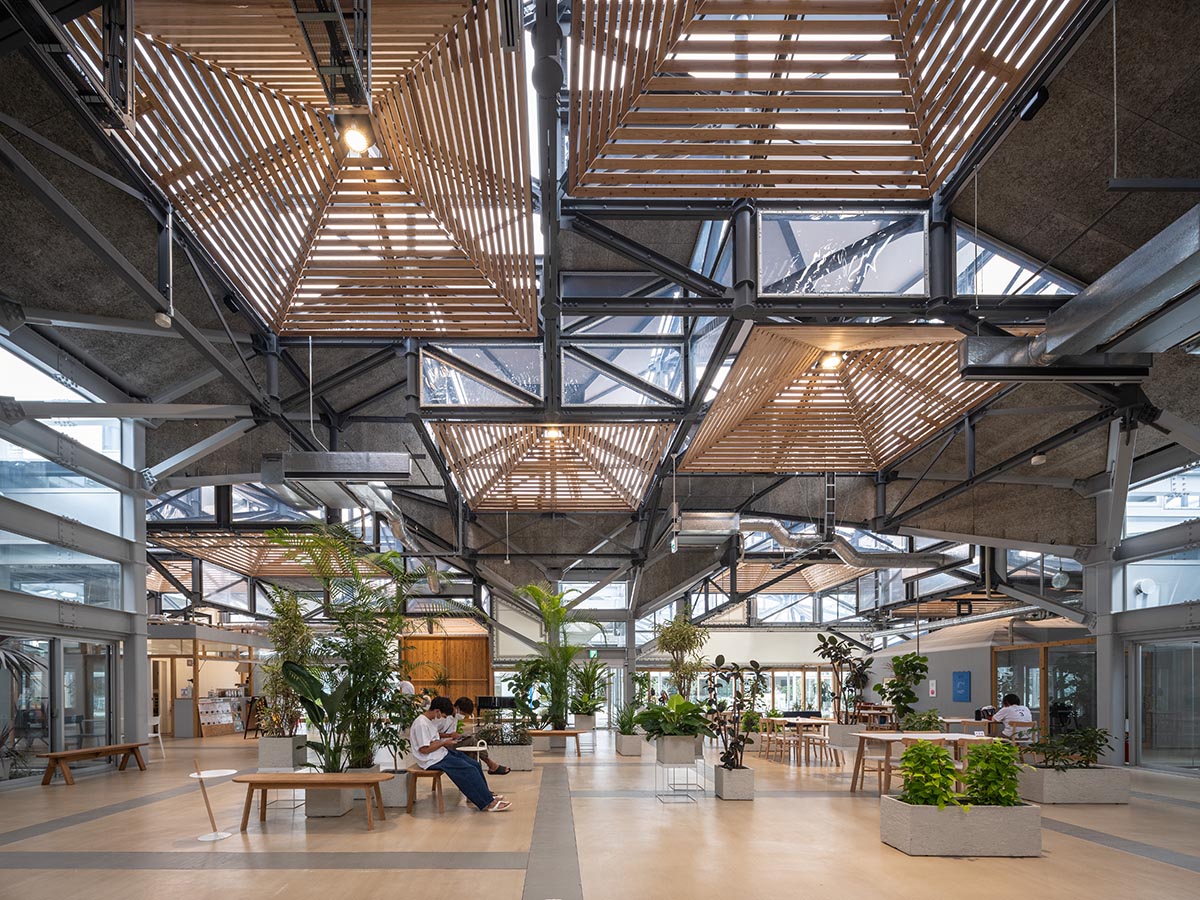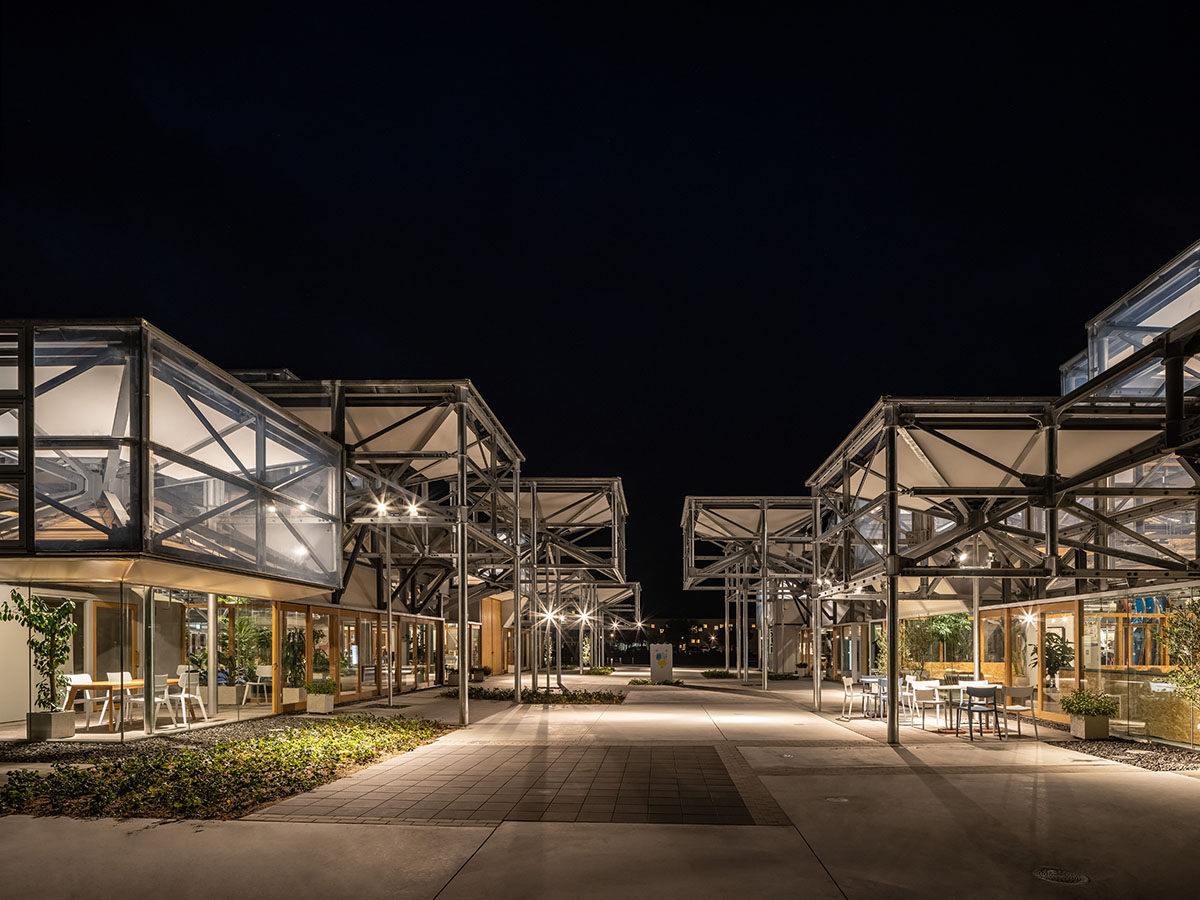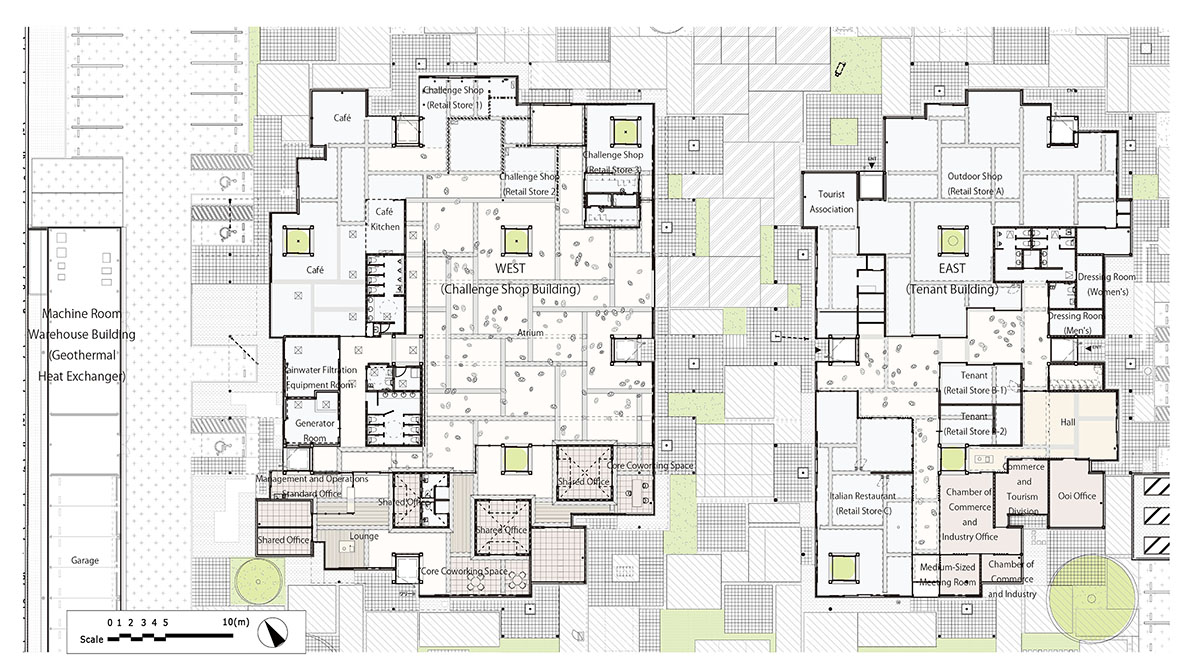Submitted by WA Contents
Osamu Morishita Architect and Associates imagines See Sea Park as glass clouds floating in the air
Japan Architecture News - Feb 08, 2024 - 06:58 5720 views

Japanese architecture practice Osamu Morishita Architect and Associates has imagined a new community space as glass clouds floating in the air in Fukui, Japan.
Named See Sea Park, the building emerges as a gathering and collaborative space consisting of glass volumes that expand horizontally by clustering.

Designed with modular glass volumes, the building consists of volumes that touch the ground and fly in places.
See Sea Park was selected in a competition held by Ohi-town in the Fukui prefecture, Japan, at the end of Summer 2019 and completed in 2022.

Osamu Morishita Architect and Associates carefully followed the project brief and to created a project where people can innovate and develop new businesses.

Envisioned as a place where people gather, spend time, and do business, the grounds of the old Chinju-no-Mori - forest surrounding shrines - is used for summer festivals, as well as for New Year's Eve and other traditional celebrations.
"The initial idea was to recreate Chinju-no-Mori in modern times. Instead of a closed space, the architects designed a space that unfolds on the ground horizontally below the floating air, like clouds," said Osamu Morishita Architect and Associates.

By choosing a lateral expansion, the studio created diversity within the order. According to the architects, "the aim was to create a kind of place where rural private houses accumulate in a village to create an attractive spatial density with the topography that is an impressive, yet timeless place familiar to the people."
"Buildings absorb and store solar energy and occasionally release heat. In sync with the thermal condition of the earth, there is a unit that holds the air in the upper layer. This is inspired and lightly reproduced from traditional Japanese homes," the studio added.

The studio created a special funnel-shaped roof system as a metaphor for a tiled or thatched roof commonly used around the world.
The most well-known feature of thatched roof is to hold heat and air, so the architects created "units" composed of air masses covered with transparent ETFE (fluoropolymer film) that acts like "a down jacket."
Through this system, the units exchange energy with the exterior and stabilize the internal environment.

The whole complex comprises 72 cube-shaped units, along with 15 tree pillars that support them. "Each unit is 4.8m²x2.4m high, with a ring-shaped core in the center and diagonal members that radiate," said the studio.
"The units are combined and gathered together to create an arch-like truss structure, freeing up space below infused with vitality and freedom, from the layered mountainous area to the coastal side."

"The site's flow not only applies to air, but also to its culture, people, perceptions, and more. People can easily access the area below the lightly floating units," the studio added.
"Sunlight shines through a structural prism composed of cedar louvers, filling the interior environment with warm, round light," the studio continued.

The architects adopted an open, gentle environment rather than using conventional energy-saving ideas, which secure energy in an isolated space with highly insulated and airtight walls.
Each glass volume - conceived as a “unit” which makes up a basic structure that embraces air, but at the same time, it also composes a flexible truss that supports a large space and expands endlessly.
While all of the units are connected, community activities blossom under the clouds.

The architects also paid attention to the appearance of the overall complex and created a monocoque membrane surface that covers the entire unit surface.
"ETFE has almost no insulation performance, but it plays a role in radiating heat. Even with heat stored, air flows freely," the office explained.
Units, scattered orderly in the project plot, cover large spaces that all connect with the earth.

"In reference to Baubiology, insulation was placed only on the vertical edges of the earthen floor, which helps to directly transmit energy from the earth, and allows the thermal environment of the earth to be radiated through. In the atrium, energy is collected from a well drilled 100 meters underground," the office continued.
"Energy is then transferred to rainwater storage through heat exchange, which is subsequently used for floor heating and cooling," the office added.

Acting like a cloud, people gather and spend time in their activities, feeling a sense of freedom and connection to the community. The units resemble an old home, it has an earth floor and a large roof, which allows airflow.
The square roof and cedar wood are assembled to create a basic, but comforting shape, resulting in an environment that is calming and comfortable as a place for warm community gatherings.

The architects compare the feeling inside these glass volumes to the structure and feeling of old folk houses and add: "In old folk houses, you will actually feel cool and refreshed on a hot summer day, because of the earthen floor."
"Such physical sensation and appreciation will make a person feel more connected to the environment and architecture."
"A familiar feeling as if it’s someone’s home, relaxed," they said.
At night, the collection of units turns into a shimmering light and is clearly visible not only from the surrounding areas.
"As time goes by, more events and activities will be held as an integral part of people’s lives and the community. People will feel the urge to return to a highly compatible environment with no barriers," the office continued.

When someone sees from the sky, the See Sea Park appears almost like "cells in a living creature," according to the firm. "It lives and makes a sustainable organization like metropolitan urbanization."



Site plan

Floor plan

Section

Elevation

Axonometric drawing
Osamu Morishita Architect & Associates is a world-class architectural office specializing in the design, supervision, and project management of buildings ranging from shops to public facilities, including new construction and renovation.
Project facts
Project Name: See Sea Park
Architects: Osamu Morishita Architect and Associates
Location: 1-8-5 Narumi,Ohi-town,Ohi-gun,Fukui Prefecture, Japan
Completion date: 2022
Award won: WAF 2023 (Best Use of Natural Light)
Principal Architect: Osamu Morishita
Design team: Osamu Morishita, David Carmona, Bryan Reinhard, Kotone Fukuda, Keita Chuma, Maki Yamashita, Shohei Uto, Kento Niwa, Tomoya Sugiura/Sugiura Architects
Structure: Satoshi Okamura/KAP
MEP Consultant: Kenchiku Setsubi Sekkei Kenkyusho
General contractor: Araki
All images © Tomoki Hahakura.
All drawings © Osamu Morishita Architect and Associates.
> via Osamu Morishita Architect and Associates
ETFE glass Osamu Morishita Architect and Associates working space
